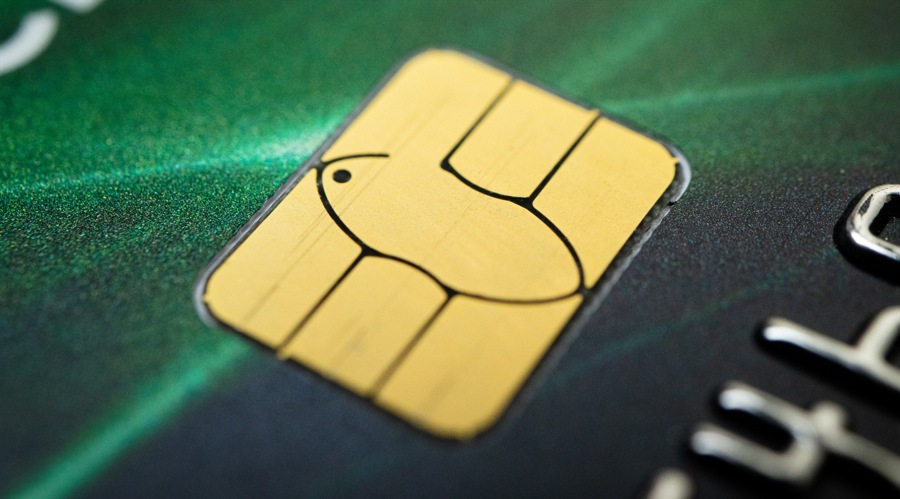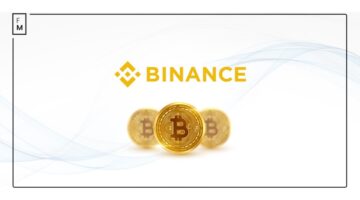
The reign of plastic
seems unshakeable. A
recent study predicts credit card transaction value will surge to a cool
$3.843 trillion by 2025. They’re the undisputed king of convenience, the
swipers of dreams, the points accumulators. But beneath this plastic sheen, a
curious dissonance hums – a rising tide of credit card debt. This financial
friction exposes a fascinating paradox in consumer behavior: the allure of
convenience clashing with the potential for financial strain.
For years, credit cards
have been our shopping sidekicks, offering a frictionless ride. From the
endorphin rush of swiping and collecting points to the built-in buyer
protection, plastic has become woven into the fabric of our purchasing habits.
Brands, acutely aware of this consumer love affair, have gotten into bed with
issuers, churning out loyalty programs like confetti. Think Bank of America’s
recent tango with Starbucks – a masterclass in brand extension fueled by the
intoxicating clink of reward points. This symbiotic relationship between
issuers, brands, and consumers has fueled the credit card boom.
But a discordant note
disrupts the plastic symphony. The Federal Reserve Bank of New York paints a
troubling picture: consumer credit card debt hit a record-breaking $1.13
trillion in the fourth quarter of 2023. This number begs a crucial question:
are we swiping our way to a financial cliffhanger? The answer, like most things
in economics, is a tangled mess.
Why is Debt Growing?
There are a few reasons
why this debt mountain might be growing. Perhaps it’s the very ease of using
credit cards. The seductive simplicity of the swipe can lead to impulsive
purchases, derailing even the most meticulous budgets. Additionally, economic anxieties
and rising living costs could be forcing consumers to lean more heavily on
plastic to maintain their lifestyles. Whatever the culprit, the trend can’t be
ignored.
This confluence of high
credit card usage and mounting debt hints at a potential shift in consumer
behavior. As the weight of debt becomes more real, some might start eyeing
alternatives. This is where the plot thickens. The “buy now, pay later”
(BNPL) sector has emerged as a potential challenger to the credit card crown.
BNPL services offer a seemingly more structured approach to credit, chopping
purchases into bite-sized, interest-free installments. This perception of
control over spending might entice credit-wary consumers, particularly younger
generations wary of falling into the debt trap.
The potential BNPL
insurgency presents a strategic challenge for brands. To stay relevant, they
need to be chameleons, adapting to this evolving payment ecosystem. Offering a
diverse menu of payment options – from the trusty credit card to the new kid on
the block, BNPL – is crucial. This caters to a wider customer base, ensuring
they capture a slice of the spending pie regardless of preferred payment
method.
But catering to diverse
preferences is just one facet of the equation.
Brands must also prioritize a
flawless checkout experience. Imagine navigating a digital labyrinth of a
store, only to be met with a checkout process that feels like a trip through bureaucratic
purgatory. Friction at the point of purchase is a recipe for abandoned carts, a
surefire way to hemorrhage potential customers. By streamlining the checkout
process, brands can ensure a smooth and positive experience, no matter the
payment method chosen.
The future of retail
payments is shaping up to be a dynamic dance between established players and
innovative disruptors. Credit cards, for now, remain the undisputed champion.
But the rise in debt and the emergence of BNPL signal a potential power shift.
Brands that can morph to this evolving landscape, offering a variety of options
and a frictionless checkout experience, will be the ones who continue to reign
supreme in the age of plastic, or perhaps, the age beyond plastic.
The reign of plastic
seems unshakeable. A
recent study predicts credit card transaction value will surge to a cool
$3.843 trillion by 2025. They’re the undisputed king of convenience, the
swipers of dreams, the points accumulators. But beneath this plastic sheen, a
curious dissonance hums – a rising tide of credit card debt. This financial
friction exposes a fascinating paradox in consumer behavior: the allure of
convenience clashing with the potential for financial strain.
For years, credit cards
have been our shopping sidekicks, offering a frictionless ride. From the
endorphin rush of swiping and collecting points to the built-in buyer
protection, plastic has become woven into the fabric of our purchasing habits.
Brands, acutely aware of this consumer love affair, have gotten into bed with
issuers, churning out loyalty programs like confetti. Think Bank of America’s
recent tango with Starbucks – a masterclass in brand extension fueled by the
intoxicating clink of reward points. This symbiotic relationship between
issuers, brands, and consumers has fueled the credit card boom.
But a discordant note
disrupts the plastic symphony. The Federal Reserve Bank of New York paints a
troubling picture: consumer credit card debt hit a record-breaking $1.13
trillion in the fourth quarter of 2023. This number begs a crucial question:
are we swiping our way to a financial cliffhanger? The answer, like most things
in economics, is a tangled mess.
Why is Debt Growing?
There are a few reasons
why this debt mountain might be growing. Perhaps it’s the very ease of using
credit cards. The seductive simplicity of the swipe can lead to impulsive
purchases, derailing even the most meticulous budgets. Additionally, economic anxieties
and rising living costs could be forcing consumers to lean more heavily on
plastic to maintain their lifestyles. Whatever the culprit, the trend can’t be
ignored.
This confluence of high
credit card usage and mounting debt hints at a potential shift in consumer
behavior. As the weight of debt becomes more real, some might start eyeing
alternatives. This is where the plot thickens. The “buy now, pay later”
(BNPL) sector has emerged as a potential challenger to the credit card crown.
BNPL services offer a seemingly more structured approach to credit, chopping
purchases into bite-sized, interest-free installments. This perception of
control over spending might entice credit-wary consumers, particularly younger
generations wary of falling into the debt trap.
The potential BNPL
insurgency presents a strategic challenge for brands. To stay relevant, they
need to be chameleons, adapting to this evolving payment ecosystem. Offering a
diverse menu of payment options – from the trusty credit card to the new kid on
the block, BNPL – is crucial. This caters to a wider customer base, ensuring
they capture a slice of the spending pie regardless of preferred payment
method.
But catering to diverse
preferences is just one facet of the equation.
Brands must also prioritize a
flawless checkout experience. Imagine navigating a digital labyrinth of a
store, only to be met with a checkout process that feels like a trip through bureaucratic
purgatory. Friction at the point of purchase is a recipe for abandoned carts, a
surefire way to hemorrhage potential customers. By streamlining the checkout
process, brands can ensure a smooth and positive experience, no matter the
payment method chosen.
The future of retail
payments is shaping up to be a dynamic dance between established players and
innovative disruptors. Credit cards, for now, remain the undisputed champion.
But the rise in debt and the emergence of BNPL signal a potential power shift.
Brands that can morph to this evolving landscape, offering a variety of options
and a frictionless checkout experience, will be the ones who continue to reign
supreme in the age of plastic, or perhaps, the age beyond plastic.
- SEO Powered Content & PR Distribution. Get Amplified Today.
- PlatoData.Network Vertical Generative Ai. Empower Yourself. Access Here.
- PlatoAiStream. Web3 Intelligence. Knowledge Amplified. Access Here.
- PlatoESG. Carbon, CleanTech, Energy, Environment, Solar, Waste Management. Access Here.
- PlatoHealth. Biotech and Clinical Trials Intelligence. Access Here.
- Source: https://www.financemagnates.com//fintech/payments/plastic-paradise-lost-credit-cards-rule-but-grumbles-grow-louder/
- :has
- :is
- :where
- $3
- $UP
- 13
- 2025
- a
- adapting
- Additionally
- age
- allure
- also
- alternatives
- america
- and
- answer
- approach
- ARE
- AS
- At
- aware
- Bank
- base
- BE
- become
- becomes
- been
- behavior
- between
- Beyond
- Block
- BNPL
- boom
- brand
- brands
- Budgets
- built-in
- bureaucratic
- but
- buy
- BUYER..
- by
- CAN
- capture
- card
- Cards
- catering
- caters
- challenge
- challenger
- champion
- Checkout
- chopping
- chosen
- clink
- CNBC
- Collecting
- confluence
- consumer
- consumer behavior
- Consumers
- continue
- control
- convenience
- Cool
- Costs
- could
- credit
- credit card
- Credit Cards
- crucial
- curious
- customer
- Customers
- dance
- Debt
- digital
- Disruptors
- disrupts
- diverse
- dreams
- dynamic
- ease
- Economic
- Economics
- ecosystem
- emerged
- emergence
- ensure
- ensuring
- equation
- established
- Even
- evolving
- experience
- extension
- fabric
- Falling
- fascinating
- Federal
- federal reserve
- Federal Reserve Bank
- Federal Reserve Bank of New York
- feels
- few
- financial
- For
- forcing
- Fourth
- friction
- frictionless
- from
- fueled
- future
- generations
- Grow
- Growing
- habits
- Have
- heavily
- High
- hints
- Hit
- HTML
- HTTPS
- imagine
- impulsive
- in
- innovative
- into
- issuers
- IT
- jpg
- just
- just one
- Kid
- King
- labyrinth
- landscape
- later
- lead
- lifestyles
- like
- living
- lost
- louder
- love
- Loyalty
- Loyalty programs
- maintain
- Masterclass
- Matter
- Menu
- met
- method
- meticulous
- might
- more
- most
- Mountain
- must
- navigating
- Need
- New
- New York
- no
- note
- now
- number
- of
- offer
- offering
- on
- ONE
- ones
- only
- Options
- or
- our
- out
- over
- Paradise
- Paradox
- particularly
- Pay
- payment
- payment method
- payment options
- payments
- perception
- perhaps
- plastic
- plato
- Plato Data Intelligence
- PlatoData
- players
- plot
- Point
- points
- positive
- potential
- potential customers
- power
- Predicts
- preferences
- preferred
- presents
- Prioritize
- process
- Programs
- protection
- purchase
- purchases
- purchasing
- Quarter
- question
- RE
- real
- reasons
- recent
- recipe
- Regardless
- relationship
- relevant
- remain
- Reserve
- reserve bank
- retail
- Reward
- Ride
- Rise
- rising
- Rule
- rush
- s
- sector
- seemingly
- seems
- Services
- shaping
- shift
- Shopping
- Signal
- simplicity
- Slice
- smooth
- some
- Spending
- start
- stay
- store
- Strategic
- streamlining
- structured
- Supreme
- surge
- Symbiotic
- symphony
- T
- that
- The
- The Block
- their
- they
- things
- Think
- this
- Through
- Tide
- to
- transaction
- Trend
- Trillion
- trip
- troubling
- Usage
- using
- value
- variety
- very
- Way..
- we
- weight
- whatever
- WHO
- why
- wider
- will
- with
- woven
- years
- york
- Younger
- zephyrnet







